Ají Dulce: The Taste of Home That Refused to Disappear
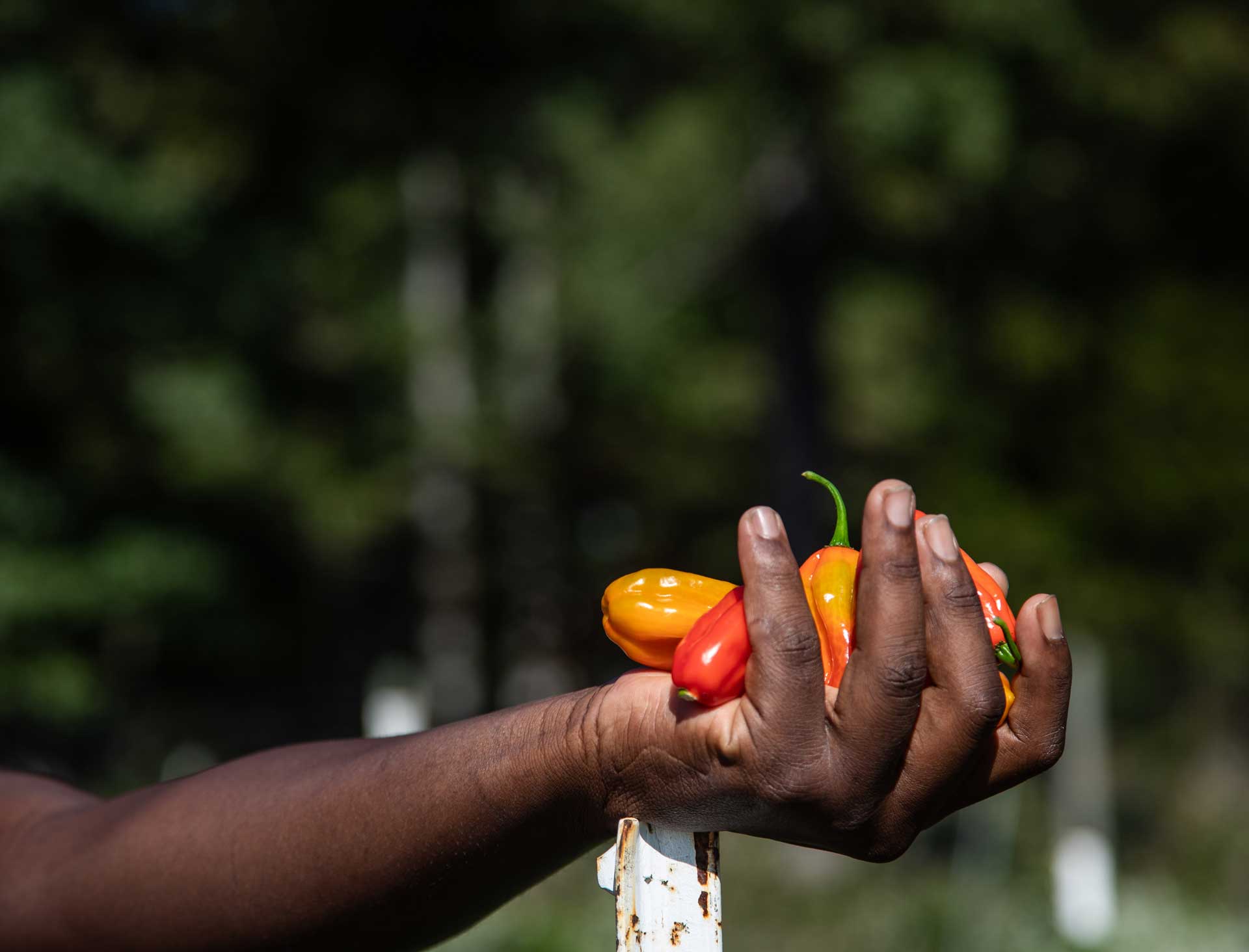

Ají Dulce: The Taste of Home That Refused to Disappear
Gabriela Montes de Oca (Venezuela) is a food communicator and founder of Tepui Creative Studio. She is a writer, documentary and content producer, and a consultant in food communications, focusing on gastronomy as a means of cultural preservation within diasporas. Her work appeared in the 2025 compilation of Best Food Writing in Spanish, and in 2025 she completed the James Beard Foundation’s Legacy Network programme.
On a crisp fall morning at Emory Knoll Farms, Irena Stein bends down and separates the bright green leaves to reveal the treasure she’s been cherishing for years. Even though the harvest may be ending, the bounty is plentiful. An instantly recognisable citrusy, sweet, and floral aroma coats the air and holds me captive. Between the leaves, I spot multiple ajíes dulces growing.
Irena is the owner of Alma Cocina Latina, Baltimore, Maryland’s only Venezuelan restaurant. When we met in May 2025, as the harvest season approached, she invited me to witness this feat: growing the most essential ingredient of Venezuelan gastronomy 2,000 miles from its original home. It was amongst the jungle-like greenery that grew alongside shrubs and gourds, that I realised this wasn’t just a farm—it was a place where memories were being preserved, not only for her restaurant but for all Venezuelans.
Commonly known as the “cousin of habaneros”, ajíes dulces go by many names. Ají cachucha, quechucha, ajicito, or ají gustoso are some of them. It is a variety of sweet perennial pepper commonly found in Cuba, the Dominican Republic, Puerto Rico, and Venezuela. Their taste is sweet and floral, with a slight, almost unnoticeable hint of heat. Their origins can be traced to before Christopher Columbus arrived in America, as by 1492, Arawak and Taíno indigenous peoples had cultivated at least four types of these peppers, which they consumed widely across the Amazon basin.
From an agricultural perspective, it is indeed a distant cousin of the chilli pepper. But from an agronomic standpoint, the ají dulce is considered undomesticated. It hasn't been mass-produced and has unique characteristics compared to spicier, more popular chiles and peppers used in Latin American cuisines. Across the Caribbean, ají dulce is a distinctive addition to sofritos boricuas, picadillo cubano, and habichuelas guisadas dominicanas.
But despite its Caribbean expansion, ají dulce remains ubiquitous in Venezuelan cooking. Miró Popic, one of Venezuela’s most prominent food writers and gastronomic historians, illustrated this point in “El pastel que somos” (2015): “Only in Venezuela does the one we affectionately call "sweet" acquire such a meaningful representation as to be considered an emblem of the gastronomic passport that identifies our cuisine when we want to express at the table what our daily meals really taste like. Ours is the only cuisine in the Americas where its use is almost excessive, practically indispensable. Without it, nothing cooked here would taste the way it does”.

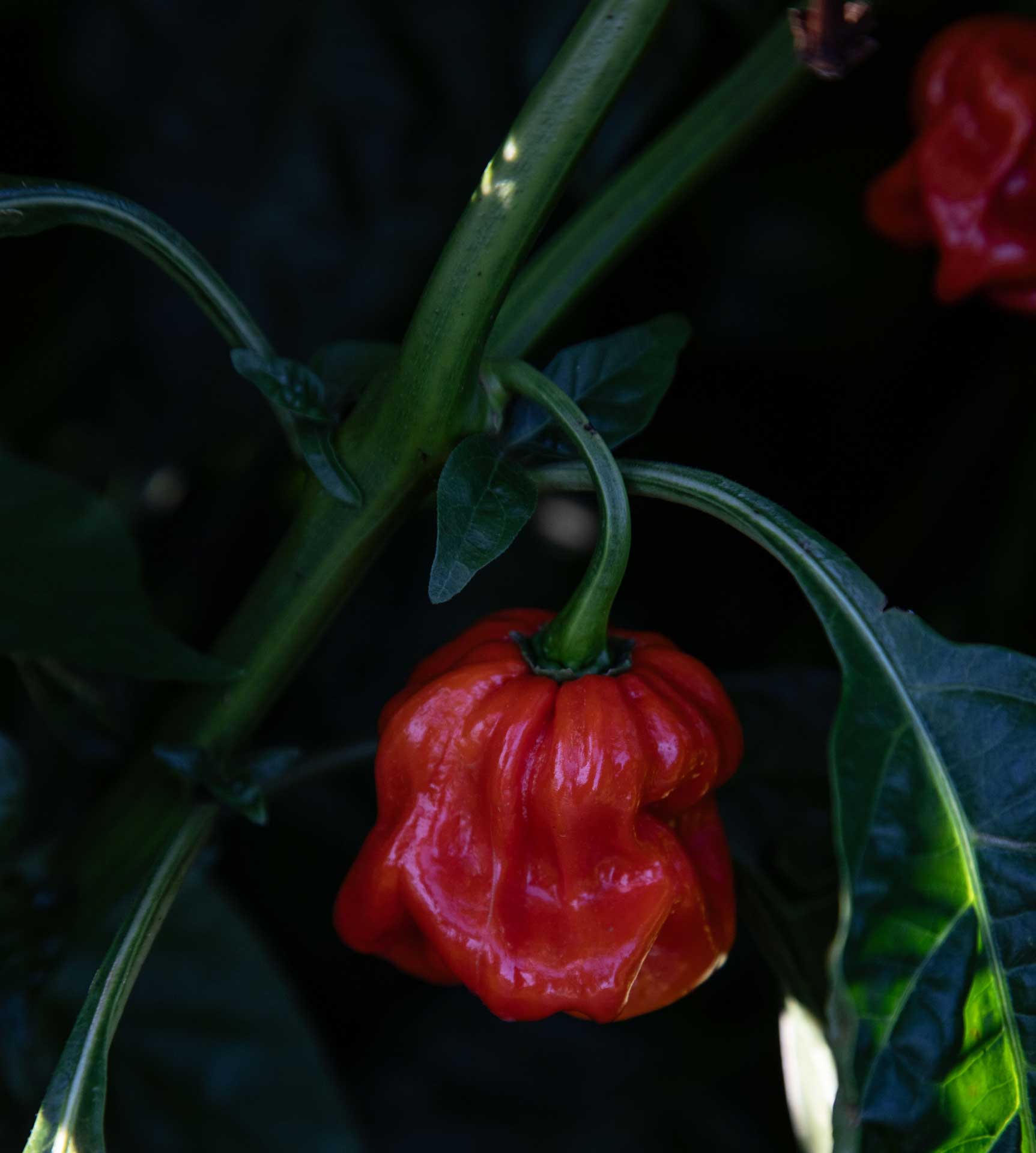
Ajíes are intertwined with my grandma’s kitchen aroma, and evoke the sounds of hallaca-making as the corn-dough parcels are filled with stew and wrapped in banana leaves, marking the beginning of Venezuelan Christmas. These small, mighty peppers are not just an ingredient but a symbol of home—a taste that triggers specific memories of sharing, belonging, and a sense of belonging that’s no longer present. It's the ingredient that signals the end of the search for flavour, because it is what Venezuela tastes like.
According to the United Nations High Commissioner for Refugees (UNHCR), by 2025, nearly 7.9 million people will have left Venezuela in search of protection and a better life. More recently, however, the association of Venezuelans with crime, violence, and deportations has made its way into headlines, electoral campaigns, discourses, and political statements.
Food, or lack thereof, has often been cited as a motivation for this mass migration. In turn, it has also become a powerful tool for Venezuelans to preserve their cultural identity in their new homes. According to the International Organisation for Migration, Venezuelan food businesses have become an essential tool for migrants to adapt to their new destinations and make ends meet under precarious conditions. However, coverage on the adaptation and evolution of Venezuelan culinary traditions is often limited or reserved for the arepa business, leaving other culinary and agricultural traditions behind.
In times of forced migration, when language, currency, and streets change, flavours become the last territory people can still claim as theirs, and a small, mighty pepper has proven to be balm, if not a cure, for migratory grief and nostalgia. Simultaneously, ají dulce, both its existence and its information, is not as readily available as other Latin American ingredients found in supermarkets and smaller shops across the United States.
Since moving to the United States in 2018 from Venezuela, via Argentina, my cooking practices have both suffered and benefited from these adaptations. Other peppers, Asian ingredients, and Hispanic brands have made their way into my pantry and kitchen, but something had been missing all along. Recently, I have come to terms with the notion that there is no such thing as “the taste of home,” as it is an ever-changing, ever-growing concept. As I accumulate more time and energy cooking in my current home than I ever did in Venezuela, I have realised the search never ends, for both my immigrant experience and my cooking. But in September 2025, I visited Emory Knoll Farms at Irena’s invitation, and discovered a single ingredient could unlock memories, belonging, and a familiar taste.
At Emory Knoll Farms, Irena found the perfect partner to fulfill her mission of recreating the flavour that connects Venezuelans to home when, in 2023, Ed Snodgrass, the owner, kindly offered a parcel of his soil to grow these ajíes. This preservation process involves careful cultivation, harvesting, and seed storage techniques to ensure the unique taste of ají dulce is retained, despite being grown thousands of miles away from its native land.
When I visited the farm to discover the results of the second year of this partnership, I stood surrounded by plants I had seen before. However, my memory failed to recognise them immediately. Identity, sometimes, is something that can easily slip away. Simultaneously, accustomed to seeing these plants grow, Irena’s team diligently got to work, picking ajíes rapidly. “This is llanerón, this is margariteño, and this is chirel,” indicated Héctor Romero, Alma’s executive chef and founder of Venezuela’s most important gastronomic academy.
As the crisis in Venezuela worsened, Héctor decided to leave the country in 2023 and, a year later, close his school. He came under Irena’s promise to become a cultural ambassador representing a country without a diplomatic presence in the U.S. With him, a new attempt to grow ají dulce arrived.
Previously, Irena had found other farming partners from her previous food business, but the harvest was limited in quantity and variety. In 2025, they completed their second yearly harvest, which included red ajíes dulces, as well as other, rarer ajíes such as chirel, llanerón, margariteño, and amazonico.
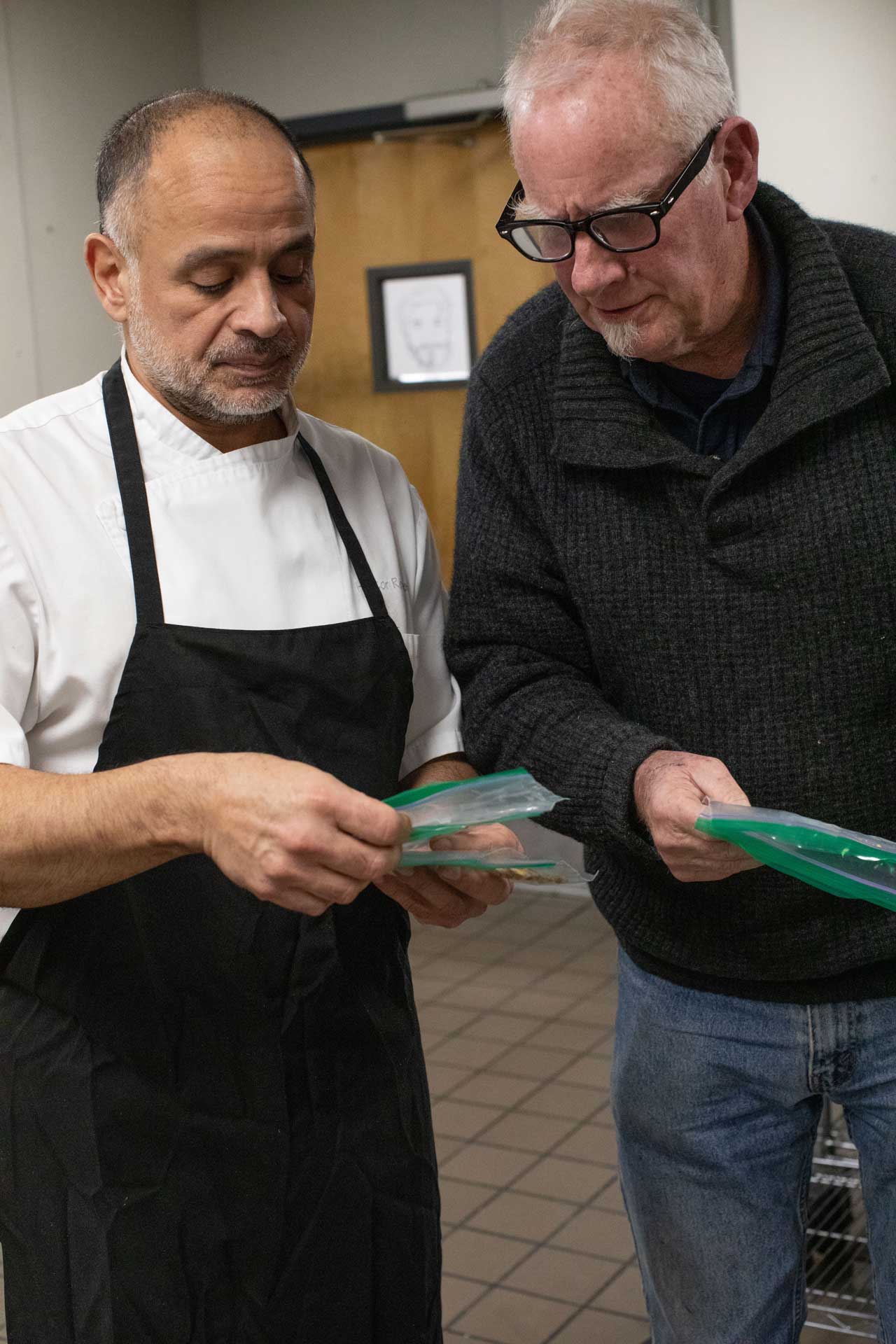

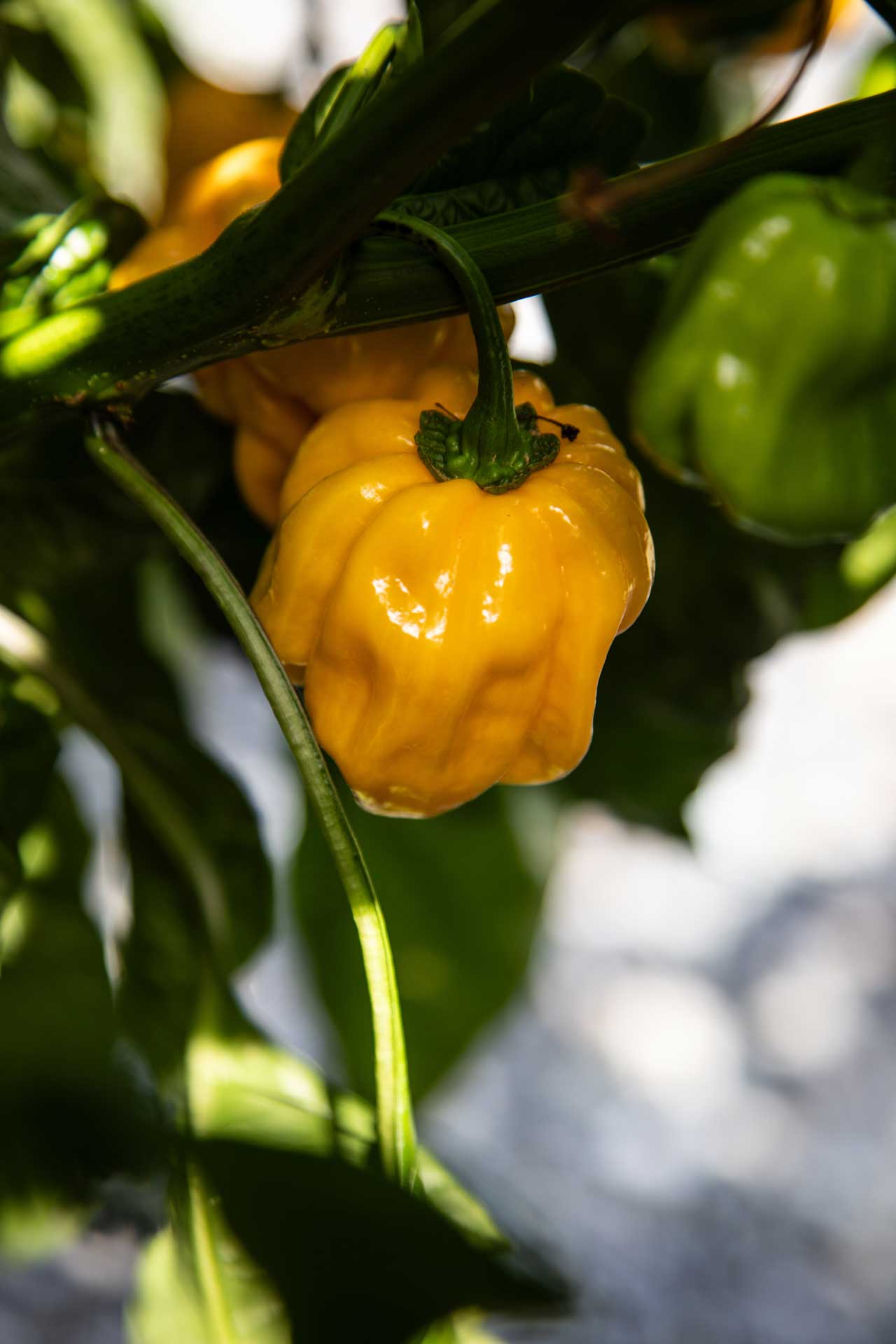

Photo courtesy of Irena Stein.
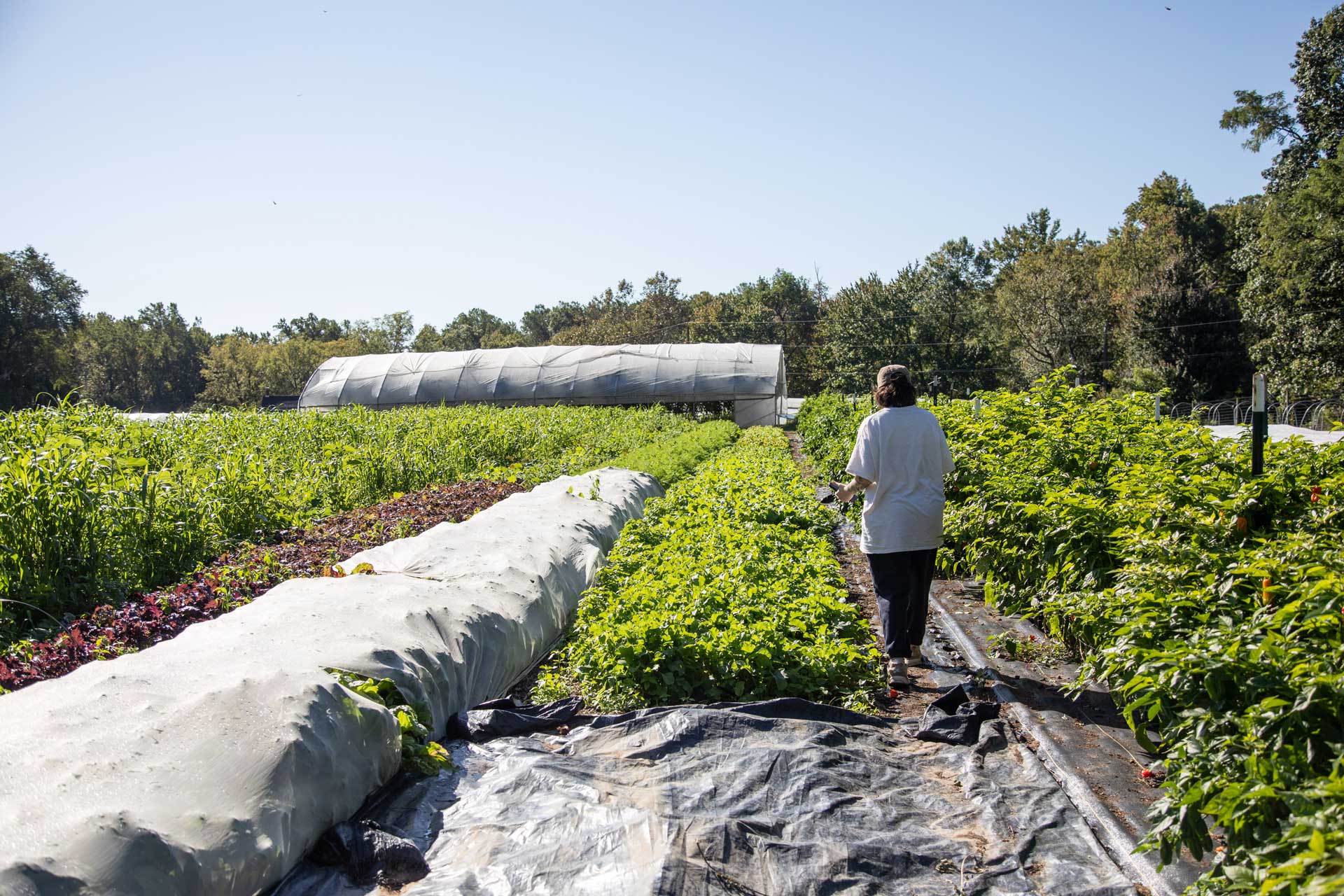
Apart from partnering with Emory Knoll to grow unique species, Irena and Héctor increased ajíes production by collaborating with Third Way Farm, a farm located on the outskirts of Baltimore, where they now have 150 plants.
After witnessing the results with my own eyes, I posted a reel to Instagram that went viral. Viewers, under the impression I was selling it, commented they would do anything to buy it, as many had spent over five, ten, or even eighteen years without tasting it since leaving their homes in Venezuela. Others started exchanging their own experiences harvesting it. Most took this chance to express: "That's the smell and taste of home."
Through this, I discovered that Irena and Héctor were not the only ones nurturing ajíes dulces in the Northeast United States. Hundreds of miles north, two other Venezuelan women were unknowingly working toward the same goal in New York State, proving that our roots can take hold anywhere.
___
Mercedes Golip left Venezuela in 2006, during a period marked by protests and the first issues that would later develop and prompt the massive migration, such as the lack of access to basic services. She first settled in Miami, where she gained understanding and exposure to an array of foods from around the world that were not part of her upbringing in Caracas.
When she left Venezuela, her cookbooks took the place of clothes in her suitcase — a symbolic choice to preserve memory. During the United States’ 2016 presidential election, the anti-migrant narrative was becoming a larger part of the newscycle. That prompted Mercedes to share more of her culture to counterbalance such political discourse. After taking a leap of faith and moving to New York in search of better opportunities, food became the perfect vehicle for her side endeavour, and she started teaching Venezuelan cooking classes at the Brooklyn Kitchen.
One day, a student asked how to make arepas from scratch. Up to this point, she had been telling them to open a bag of pre-cooked masa, pour it into a bowl, add water, and shape arepas on a griddle, rather than nixtamalizing them. The question led her down a rabbit hole as she started researching the perfect corns for the arepas and began nixtamalizing them (a process usually associated with tortilla-making), soaking corn kernels in an alkaline solution that helps remove the corn husks —a lost technique due to the mass-marketing machine of masa harina as the only possible way to make arepas.
“Teaching these classes was my way of healing a wound that’s never really been closed, the wound of migration. I didn’t do it from a very traditional and authentic point of view, but rather as a metaphor between my own experience as a migrant, and my history of living 20 years in another context,” said Mercedes.
Her research led her to establish a larger network and relationships with farmers and researchers who preserved and studied seeds, corn varieties, and organic harvests. In this process, she remembered she had ají dulce seeds that her parents had brought from one of their last visits to the United States from Venezuela. Mercedes had been growing these ajíes in her Brooklyn, New York, apartment, yielding up to 15 ajíes dulces each year.
For seed reproduction, an NGO dedicated to seed re-matriation offered support in the Hudson Valley, New York. However, she couldn’t find the right collaborator or farmer who understood the value and cultural significance of this particular ají dulce. But every challenge fueled her endeavour.
From her time at Brooklyn Kitchen and the masa demonstrations she set up at the farmers’ market, she had met Dr. Gabriela Pereyra, a farmer and agronomist who owned a vast enough plot to plant ají dulce alongside other crops. Mercedes reached out, and Dr. Pereyra immediately agreed to make room for these seeds to grow in her Middletown, New York, farm. Without hesitation, she understood the assignment, as she herself had been counting on this ingredient to satisfy her search for home.
“For me, finding that connection I lost by not returning to Venezuela is impossible, but I’m trying to reconnect with the country through food. Yes, ají is something Venezuelan, but it’s grown here and makes everything feel more familiar and closer,” said Mercedes.
The initial number of seedlings was 300, though not all survived. However, about 40 pounds were harvested every two weeks from the end of August to the end of October in that first shared attempt. The harvest wasn’t only a win for Mercedes.
Much like Mercedes, Dr. Pereyra had left Venezuela in 2009 in search of better opportunities. After graduating with a biology degree in Caracas, she pursued master’s and PhD degrees in Germany, specialising in agronomy and biogeochemistry. Thirteen years ago, love brought her to the United States, where she started dreaming of having her own farm.
In 2021, she and her partner bought the land, which is now Yara Farms. They named it after the Venezuelan goddess of water because it is located in upstate New York's flatlands. Before meeting Mercedes, Gaby also dreamed of planting ajíes dulces.
"When you leave, those everyday smells and flavours no longer exist. At that moment, I had 16 years of scientific training. It was inconceivable that I didn't have at least one ají dulce plant that yielded the flavours and smells I wanted. I wanted carne mechada that tasted like carne mechada (...) And don’t even get me started on how many times I bought hallacas that didn't taste right.”, emphasized Dr. Pereyra.
As they began planting their first potential crops, Dr. Pereyra started to find a way to make her dream a reality. In Venezuela, she explained, these ajíes grow in impoverished soils, but here, in the Northeast, the abundance of nutrients allowed them to grow bigger and more abundant than she had ever seen. At the same time, it was essential to monitor the heat they were exposed to, as these plants were used to growing in Venezuela, where there are only two seasons: rainy and dry.
In the first year of planting, Dr. Pereyra mistakenly planted ajíes dulces next to another type of hot pepper. The wind and pollinators could cross-pollinate the heat genes into ají dulce plants, making them more pungent and losing their mild characteristic. However, the result was a flavourless ají. She was determined to try again.
“Six hundred years ago, when the Arawak peoples left Venezuela and took their seeds with them across the Caribbean, the same plant grew equally on all the islands. Today, with climate change, these plants have learned to grow alongside the microorganisms available in the soil, so they’re not the same species across countries, such as Puerto Rico or the Dominican Republic. This ají dulce is uniquely Venezuelan,” she emphasised.
When Mercedes reached out to Dr. Pereyra and offered her seeds, she had already begun her own experiment of planting other seeds she had access to. Without knowing, the two shared a mission. After germination, Dr. Pereyra tended to the plants growing in a greenhouse, where she closely monitored and controlled the temperature to replicate Venezuelan weather conditions. Despite her having two other jobs besides managing her farm, this labour required and demanded all of her attention. This time, she refused to fail. “I expected nothing, and I got everything,” she said.
From Mercedes’ seeds, 400 plants grew abundantly and happily. The first time they saw them, “We felt like Scrooge McDuck,” they said.
Neither Dr. Pereyra nor Mercedes has visited Venezuela since they left. However, their connection to the land, literally and figuratively, has been found in tending to these ajíes, transforming them into a balm for nostalgia and a cure for an open wound.
Their own harvest has been converted into sofritos for carne mechada and the base for the filling that makes up hallacas. However, the results of this collaboration have not only been for their own consumption. As Dr. Pereyra explained, she donates a portion of the crops to New York City food pantries, where the majority of its beneficiaries are Venezuelan immigrants. Additionally, they have set up a delivery service for people in the United States who are eager to try “a taste of home.”
“In these turbulent times, ajíes dulces have no political affiliation, no social class, no social strata; they're everywhere. They can be found in the filling of hallacas as well as in the sauce of pasticho—the Venezuelan version of lasagna. Ajíes are neutral ambassadors who can speak about us, as Venezuelans, without any negative connotations, because there's nothing bad to say about them. Tasting them is like travelling to Venezuela without a passport,” said Mercedes.
These ajies, compared to those growing in Maryland, are milder in flavour but equally bright in colour. Their appearance can be flimsy, and their rubbery exteriors make them look like plastic. As soon as I opened the box that Mercedes and Dr. Pereyra sent me, tears filled my eyes. In them, I recognised the same stubbornness and determination that had brought Irena and Héctor to find the right farmers to grow these crops, and to be able to smell, taste, and share the nostalgia they encapsulated.
As I tasted the results of both harvests, I tried to determine whether their flavours matched my memory of growing up in Venezuela. It was an impossible task. At home, even though the flavour was ever-present in most household dishes, it went unnoticed. Distance, time, and perspective have given me a unique appreciation of the past. Their flavour and size differ, partly due to the environment and partly to years in exile, both for myself and the ajíes. Still, both species tasted and represented my home.
Back in Maryland, towards the end of the harvest season, Alma Cocina Latina had transformed its menu to celebrate the bountiful 2025 yield. Since our visit to the farm, chef Héctor had transformed the ajíes into ajiceros, a spicy sauce made from brined, preserved ajíes and other vegetables, used to season arepas, stews, and beans. He also added them to the list of ingredients for dishes like the Plantain Orinoco, which includes a mix of ajíes in its signature sauce, and the Entre Coche y Cubagua, a scallop and coconut crudo with ají dulce seasoning.
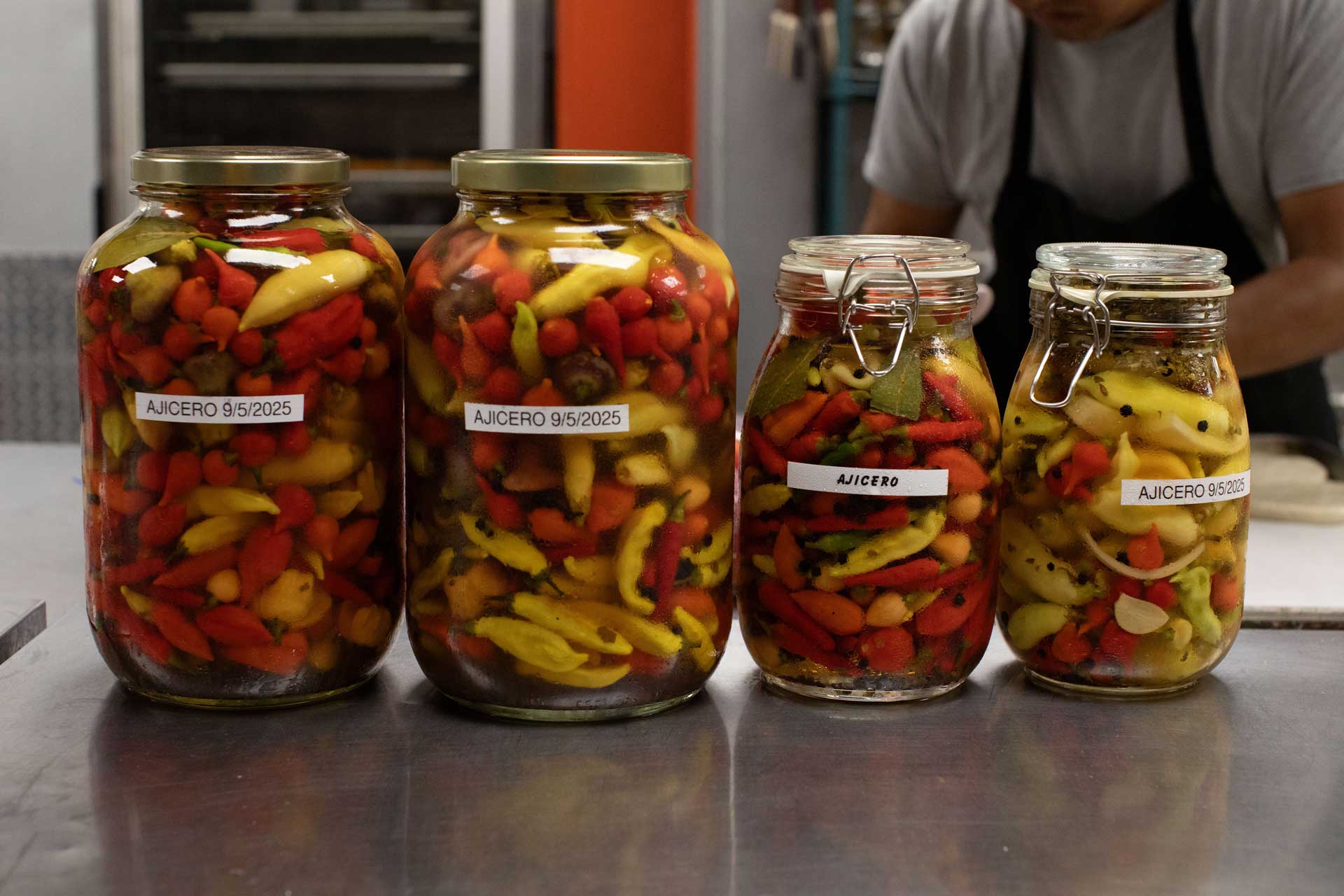


As patrons enjoyed the meal, each dish arrived with a side of history, often delivered by Irena herself, turning the meal into a conversation. Venezuelans or not, they were amazed by the flavours and the stories behind them. Many were surprised to learn, ‘I didn’t know this was also Venezuelan food.’”
For a restaurant representing a country without diplomatic presence in the United States, this reaction carries weight. Their service is not just about putting food on a plate, but about reclaiming a narrative. It is about people — beyond the headlines — who plant, cook, and preserve the ingredients that shape our culture, in Maryland, New York, and wherever the diaspora has settled. Among them, ají dulce stands out: a small, unassuming pepper that also stands as a vehicle for staying connected to a land that often evokes complicated feelings. Now rooted in American soil, these ajíes bridge two homes — the one we left behind and the one we are building now.
In the words of Miró Popic, “Since we have had a chosen historical consciousness, ají dulce has been a unifying factor in Venezuela. It was so when the country was polarised between the cassava eaters in the East and the corn eaters in the West, and it was the common ingredient for indigenous people and Spaniards, allowing for their stability and the establishment of the foundations of what would become Creole cuisine.”
Outside Venezuela, ají dulce continues to quietly grow and unite a diaspora that rarely makes headlines. Through it, we write the part of our story the news doesn’t tell: how a scattered people continue to plant, adapt, and preserve the taste of a nation, one seed, one kitchen, one memory at a time. 🐟
